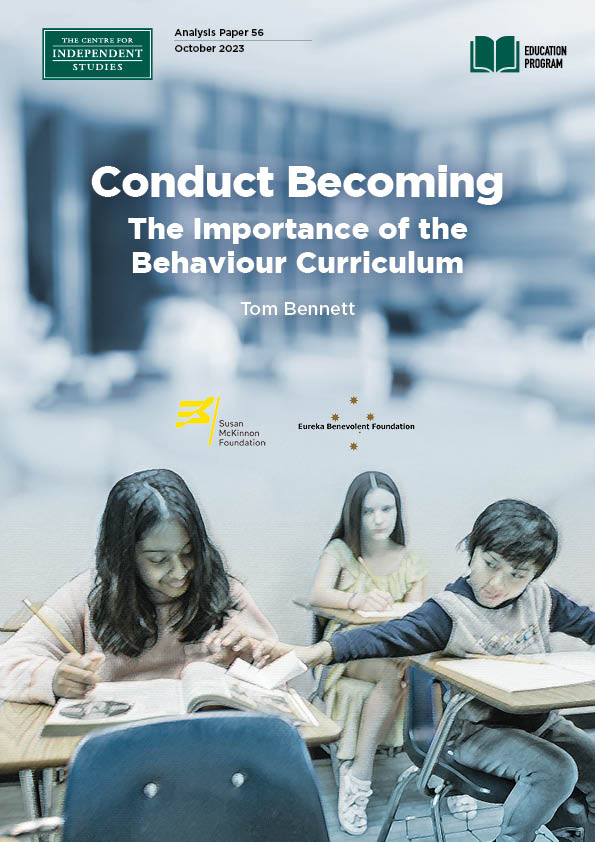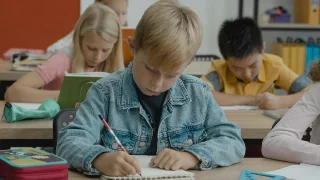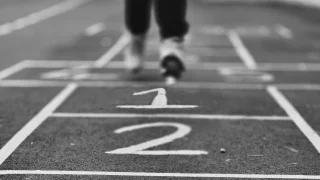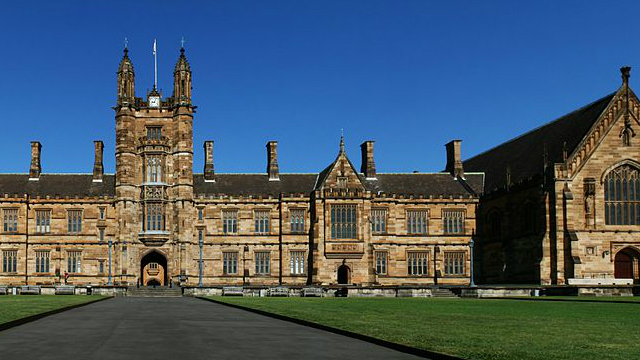
Introduction
Behaviour in many schools in the UK is often far below what it could be — or what parents would hope it to be. For decades it has been ignored at a policy level, and as a result it has decayed at the school level. Training is frequently weak or non-existent in this area[1], and leaders fare no better, often lacking even the most basic training in understanding how to run behaviour at an institutional level. But ministers in England have started to take this pressing problem seriously. Behaviour has started to dominate national school strategy, and the results are starting to show. New policy strategies in the last five years include:
- New Behaviour Guidance for Schools, emphasising the Behaviour Curriculum[2]
- Revised guidance on exclusions and suspensions
- A National Behaviour Survey to tell us what school behaviour is really like[3]
- The Behaviour Hubs, a scheme that matches schools with impeccable behaviour culture with schools willing to improve[4]
- The Early Career Framework, a model of how new teachers should be trained to be adequately prepared for classrooms[5]
- A new National Professional Qualification for Headship (NPQHs) containing evidence informed approaches to leading behaviour.[6]
The revised School Behaviour Guidance was completely rewritten to emphasise the importance of what I coined The Behaviour Curriculum — the idea that behaviour could (and must) be explicitly taught to children, to help them understand how to successfully navigate the complex social environment of a school.
Another key area of reform was the National Behaviour Survey — an attempt to create a data-led understanding of what behaviour was like in English schools. This on-the-ground analysis of how students and staff experienced behaviour on an everyday basis was created to help drive an understanding of how good — or bad — things really were, and whether new strategies and interventions were working.
Education policy in England now works in a far more joined-up way. There is a golden thread that runs throughout all of these reforms. Before, behaviour strategy was piecemeal, disjointed and rarely evaluated. Like behaviour itself, it was largely ignored. Now, it works more harmoniously, like an engine, with different parts playing different roles to serve a greater end.
Practically this means that teachers are now, via the revised Early Career framework, guaranteed a training experience that promotes the explicit instruction of the behaviour curriculum. New leaders are now trained that the behaviour curriculum must be built and maintained at an institutional level. Struggling schools can apply to be matched with more successful schools to learn from them how to build these institutional structures that guarantee the creation of consistent behaviour cultures (based on a curriculum).
When seeking clarification of how schools should create these cultures, educators can now turn to the behaviour guidance for schools, which has been completely repurposed from a legal document to an advisory one, offering helpful guidance about what to do, rather than risk-averse warnings on how not to break the law.
Even OFSTED, the English school inspectorate, has joined in with this purpose. Notionally independent of the government, they have recently retrained all of their inspectors to understand and follow the revised school behaviour guidance as their manual for understanding how effective a school is at managing its behaviour.[7]
It’s early yet, and most of these systems are in their infancy. But in conjunction with the National Behaviour Survey, it will now be possible to get a sense of how well things are going, and how these strategies are working.
In Australia, it is clear there has been some progress in improving the state of behaviour in schools. I am aware the Senate’s Education Committee is looking into solutions to address the issue of classroom disruption and disorder. And it is good to see that Australia’s education ministers have accepted the recommendations of an independent review into teacher training to ensure all new teachers will be taught about evidence-based classroom management.
Australia’s policymakers must strive toward their own ‘golden thread’ of reform — and that must include behaviour among the priorities. By no means has the UK yet achieved everything in education reform that is needed, but we have made progress that could be readily adapted in Australia’s school systems.
Why behaviour matters
Good behaviour is fundamental to everything we are trying to achieve in education. What do you think education is for? Pick anything that you think schools do or should do. Academic outcomes? Social mobility? Creativity? Citizenship? Creating the next generation of activists or poets? It all comes back to behaviour. William Glasser, the father of Choice theory, described behaviour as nothing less that ‘everything we say or do’[8]. It is the sum of all of our actions, especially deliberate ones, but including our automatic ones. The way I am typing this, is my behaviour. The way I sit, the way you recline on your ottoman, the way you pose, your gait, your gestures … these are all your behaviours. With a definition as broad as this, nothing that humanity seeks to achieve happens without behaviours that precede their achievement. You want children to know things? Then behaviour must be your priority, because unless they behave in ways that optimise their learning (e.g., listening, studying, working, revising) then their learning will be massively impeded. Do you want children to be creative geniuses? Mozart was hot-housed by his father; Shakespeare did not spring from the mud and write the Tempest — he attended a grammar school, a gruelling life of classical drilling.
All of this comes back to behaviour. Talent, skill, knowledge, these are obtained by effort, perspiration and attention. There is nothing magical about the fundamentals of learning. What is magical is how many people seem to think that their learning can equally be obtained without these processes. Children learn best in environments where their behaviour is optimal, and the behaviour of their peers is optimal. There is a lot of magical thinking in education. There are naïve people who, unwisely, claim that children can learn through anything other than intense focus, extended periods of thinking, listening and practice. Or to put it another way, children do not flourish in chaos. Chaotic environments benefit no one, except predators, or those who profit on an absence of rules or boundaries, like bandits, or museum looters.
When classrooms are chaotic, children cannot hear one another, and teachers cannot deliver as much content as they had hoped, so the syllabus is simply buried, unavailable to the students. In environments that are unpredictable, students live in fear of one another, of torment, abuse, victimisation or bullying. No one learns well in a room like that. I hear some well-meaning teachers say that they don’t mind a busy, noisy classroom. And neither do I — if the noise is structured, and focussed on what you want students to think about. But if the noise is undirected, trivial or irrelevant, then it represents an absence of learning. Even when children are calm and civil, if their discussions are about TikTok or football, then they are simply not learning. The time may as well have been spent at the park. Pointless chatter is like breathing helium. It doesn’t poison you; it asphyxiates. It replaces what should be there.
If children can do as they please in a classroom, then what they please will rarely be the optimal behaviour for learning. Why should it be? What child naturally knows how best to attend, think, revise and learn? And how many children want to? Children, some progressive theorists believe, are natural learners, naturally curious. Well, that theory is easily dispelled. Academics like Geary[9] have long made the distinction between biologically primary and biologically secondary learning. Humans are naturally curious, that’s for sure. The problem is that they are curious about things that immediately affect them, at their scale (the biologically primary content). That’s why children naturally seem eager to learn about how balls roll, and ice feels, and what things taste like. But this natural curiosity does not extend easily to complex, obscure or academic subjects (the secondary learning). We are naturally attracted to the novel, the immediate, the dramatic, the social, the proximate. But it takes effort to learn or focus on trigonometry, particle physics or irregular verbs.
In a classroom we expect children to learn about subjects that may not immediately appeal to them. We aspire for them to focus hard on things that are often tiresome or repetitive. We need them to dwell on topics that are difficult, arcane and dislocated from their lives. We expect them to focus for long periods of time. We expect them to revisit topics to renew their appreciation or retention. We put them through experiences — like exams — that test their nerve and confront them with value judgements about their ability.
Learning is incredibly important. But it is not always pleasant, easy or amusing. It can be, but none of these qualities are necessary or sufficient conditions to its processes. There are ways that children can behave that will optimise its acquisition — civility, calm, effort, etc. There are behaviours that impede its processes- truancy, distraction, deflection activities.
So, behaviour is fundamental to everything we want to achieve in education. It all comes back to proper behaviour. Without its perfection, you can have the most extraordinary curriculum, the most beautifully sequenced syllabus, an elegant campus, expert teachers and every resource in the academy. But without appropriate behaviour, all of these factors are dashed against the cliffs of the children’s indifference. Fabulists in education claim that a well-planned lesson is sufficient to create good behaviour as students are naturally drawn into the joys of calculus, phonemes or the Corn laws. This is a fantasy propagated by people who do not teach children. Without good behaviour, learning cannot be good. Without great behaviour, learning cannot be great.
How effective whole-school approaches can improve behaviour outcomes
So, we understand what the chief challenge for schools is — how to ensure that students behave optimally, both as individuals for their own purposes but also as a community of learners, e.g., as a member of the school. Behaviour in a school is more than just personal conduct, habits of punctuality, etc. They exist in a social context. They exist in groups. And we know that when humans exist in groups, they become subject to enormous social pressures to behave this way of that. Humans are like Rubik’s Cubes — the behaviour of one square affects the behaviour of the others. We know that our behaviour changes powerfully in the presence of others. Alone, we might feel comfortable singing like Andreas Scholl; in the presence of our peers, we succumb to peer pressure to avoid doing so. This effect is called conformity. Another well documented effect is Social Proof theory[10]. In the presence of others, we seek to understand what acceptable behaviour looks like by observing what the common norms of our proximate groups are. In this way we can discern what acceptable conduct might be for where we are and whom we are with. When in Rome, we do as the Romans do, unless we are prepared to pay the cost of rebelling against these norms.
For students to do well, they must know how to behave with one another. We exist in a social contract, where it is impossible for everyone to have their personal preferences universally satisfied. It is impossible to run a school based on the tastes of 100 separate souls. Like cars on a motorway, we must restrain our immediate desires and bend the knee to the rules that bind and benefit us all — the highway code. When we all obey these precepts, everyone gets home in good time. If we do not, everyone suffers, despite the temptation to simply drive as we wish. Because when everyone does so, the only result is chaos. So too in complex institutions like schools.
But there is a problem to achieving this goal of optimal behaviour in groups. First, many teachers are unprepared to manage the behaviour of others, and especially groups of others. And especially groups of others with challenging behaviour. This may surprise many people outside of education, but commonly, many teachers go through teacher preparation or induction with only the most cursory of training in this area. ‘You’ll learn it as you go along,’ they are told, which is advice I wouldn’t give to a line chef, let alone an airline pilot. ‘If your lessons are well planned, they will behave,’ they are told, untruthfully. ‘You need to build relationships,’ they are advised, earnestly, but not told how to do so. This is a global problem. I have studied the education systems and teacher induction programs of a dozen countries, including the UK and Australia, and the teacher prep in this area can best be described as patchy — if I am feeling charitable— and chaotic, if I am not. Put simply, many teachers become competent classroom managers despite their induction programs, rather than because of them.
And that is at a classroom level. At the level of leadership, it is usually worse, with very few school leaders experiencing anything like a high-quality training program in the management of behaviour at an institutional level. If at all. Again, this shocks many people outside of education, who assume — wrongly — that surely, this is central to how we prepare leaders of hundreds and thousands of students. But we do not. I led a study into this topic in the UK for the DfE, and we found that even in the most esteemed of teacher prep universities, behaviour management as barely an afterthought, when it was a thought at all. Some institutions even scorned its instruction, considering it brutal, and crudely practical and unnecessary, when all that was needed was surely to study more Rousseau or Foucault. As Stephen Munday put it in his review of Teacher Training in the UK in 2016, referencing the Carter Review of Teacher Training[11] :
“This report highlighted that the teacher training system in England is generally performing well, but suggested that there is considerable variability in ITT content across the system. Carter found that there were significant gaps in a range of courses in important areas such as subject knowledge development, subject specific pedagogy, assessment, behaviour management and special educational needs and disabilities (SEND). ”[12]
In 2017, I led a major investigation researching what it was that the most effective schools did to guarantee high quality behaviour, called Creating the Culture[13]. We looked closely at around 200 schools, ensuring we studied high school and primary, special education and mainstream. I stipulated that I wanted only to investigate inclusive schools (ones that tried their hardest to avoid excluding, except when necessary), comprehensive schools (ones that served a broad range of students, rather than a rarefied and boutique cohort) and ones that were safe, calm and dignified. If schools could demonstrate high-quality environments, in these conditions, then they must be doing something right, our rationale went. Did they have something in common? Was there anything scalable, replicable from these institutions that we could usefully replicate in other schools? Or were they freaks of circumstance, staffed by, for example peculiar cohorts of extraordinary but irreplicable individuals with rare charisma?
Happily, the answers were reassuringly mundane. The precious metal that ran through the firmament of these schools was not gold, but iron: easily obtainable, and plentiful. Schools that successfully created healthy cultures where everyone could flourish and succeed were characterised by the following qualities:
- Clear, universally understood standards of behavioural conduct
- Highly competent processes of staff induction and training into the above standards of behaviour
- Relentless, implacable commitment to ensuring that all students were taught— not simply ordered— into following these standards
- Olympian levels of consistency
- Dedicated time allocated to the management of behaviour
- Clear behaviour policies that were executed with high levels of fidelity
- Massive buy in from all staff
- Usually, a leader with a strong sense of moral purpose, prepared to hold the line on their vision of behaviour
- Consequence systems that were understood and implemented consistently by all staff
- Support mechanisms for students that needed it
- Removal processes for students who disrupted others.
And so on. Many of these would barely surprise you. But in education, nothing can be taken for granted, and many, many schools operate on very different principles to these. I have visited more than 850 schools in the last 10 years, almost exclusively looking at their models and systems of behaviour. The joy of this for me is that I now understand that schools can be brilliant in many ways. There is no one ideal template that all others must emulate. But what they do all have in common, what they must cleave to or invite disaster, are the principles I outline above. They can do so in so many ways, but they must embody those basic mechanisms. Without them, civil conduct at an institutional, level is impossible to generate or sustain. Schools can get by for a while without some or most of them, but eventually they will decline. Entropy is a fundamental force of human organisation, if it is not refreshed.
The Behaviour Curriculum
My research into the most effective schools led me to a deeper understanding of what the best schools did to mitigate and defeat the most challenging circumstances. And the broad answer is that they taught a Behaviour Curriculum (although no one called it that). But it was a profound and prominent feature of every school that was successful, despite adversity, whether they were mainstream schools or specialist ones for the most challenging children, whether they were primary or secondary, rural, coastal, urban or suburban.
What is the Behaviour Curriculum?
Children need to behave to succeed in school. This apparently uncontroversial statement contradicts an ocean of contemporary opinion traditionally espoused by many teacher trainers, academics, polemicists, activists and people who do not teach children more generally. But any contact with a classroom will dispel the myth that children can mess around and still learn, or be safe, or thrive. No child thrives in chaos. The only people who thrive in chaos are opportunists and predators. As the Machiavellian Littlefinger puts it in HBO’s Game of Thornes, “Chaos is a ladder.” He meant that it was an opportunity for scavengers and predators.
But most of our behavioural habits are learned[14]. No child is born knowing how to behave in school, how to tie their shoelaces, how to take their turn, to share, to be kind, to queue. Fortunate children are taught from infancy these social habits until they become automatic. These children start school light years ahead of others, because they are ready to participate in the behaviours and customs of the institution. Less fortunate children do not possess these habits or do so in diminished quantities. The least advantaged child possesses the least of these advantages. None of this is the fault of the child.
The Behaviour Curriculum is a conscious strategy designed to rectify this inequity. If behaviour is learned, then it can be taught. If it can be taught then it must be taught, consciously and explicitly in schools.
Human behaviour is frequently predominantly habitual. This means that people tend to revert to deeply ingrained, pre-learned behaviours unless something else intervenes. It is like Newton’s laws of motion, applied to conduct. Unless I choose to do otherwise, I will drive my normal route into school every day. Or unless there is some obstacle to deter me, or incentive to use another road. These habits are the train tracks upon which we run our lives. Without them, we would be paralysed with constant decision making, as our cognitive bandwidth is constantly blown by too many processes.
When you consider a group of people, these behaviours are bound to vary from person to person. In a very large group, like a school, the variety and complexity is magnified further. In a room, a playground, a college, you will have thousands of different habits and beliefs about what the right thing to do is, how to conduct oneself, how to respond to a teacher, how hard to work, when to start packing away.
But what if you just want them all to walk on one side of the corridor? Or turn up to lessons at a specific time? Or follow a given protocol for asking or answering a question? In other words, what if you want students (and for that matter, staff) to all follow certain behaviours consistently, because those behaviours are the ones that create the best learning environments? If everyone is allowed to do as they please, then we maximise conflict. People’s desires and inclinations and actions will clash; some will be late, some early; some will shout out, some will put their hands up; some will give up, and some will persevere. This is not a community where all can flourish, because it becomes a war of all against all, as Thomas Hobbes would say[15]. The comparison with roads is neat; if everyone was permitted to drive as they pleased, the roads would be chaos, not free. But when we all divest of ourselves of a little freedom, we gain an enormous amount of opportunity — a slight loss of negative liberty for a large gain of positive liberty, as Isaiah Berlin[16] put it. This is the essence of the social contract.
But this only works at the level of the community. All students have to follow certain patterns of conduct, or the whole engine seizes, in the same way that a single car driving the wrong way down the motorway turns a calm commute into a Mad Max: Fury Road re-enactment.
So, the school has a duty to teach children the habits of conduct that will maximise their safety, their opportunity to learn, and their dignity. If they do not do this, then the following will happen: if the school largely serves demographics of children advantaged with social capital, habituated into habits of institutional success — sharing, waiting, helping, perseverance, etc., — then the school will be fortunate enough to experience high levels of compliance, and only deal with relatively minor levels of disruption. This is the case in, e.g., highly-affluent private schools, schools with small intakes, or younger children. The other thing that will happen if the school does not serve such a polished and compliant community of learners, is that misbehaviour will be high, and the school will constantly fight the same battles on a gruelling and endless basis.
The school, in other words, needs to teach what I have called the Behaviour Curriculum: the basic routines and sub routines of how to conduct oneself in a school. We do not do this because we want to oppress or tyrannise children, but because we want to liberate them, keep them safe, scaffold their flourishing and enlightenment. The land of do-as-you-please may be a nice place to visit, but you wouldn’t want your children to live there. Children are not innately as good at these behaviours as we would hope. Often, they are novices in the behaviours in which we are expert. And novices require instruction.[17]
When children are collectively taught the behaviour curriculum, it acts like a highway code for them: ‘this is how we will all succeed — together’. Schools that do this well, plot a clear framework of not just what they want the children not to do (which is important) but also what they want them to do. In every job role we expect to train people to be ready to begin; only in education do we assume that all children already know what they need to do, and why it matters. This sets children up to fail — especially the already poorly behaved student.
Schools should dedicate a substantial period of time at the beginning of the year teaching this to children, not merely giving them a list of 10 rules to stick in their books, to be forgotten. Perhaps a day, of patiently teaching, discussing, practising and perfecting the protocols for simple everyday moments in schools — classroom entry, canteen etiquette, corridor conduct, assembly routines, homework expectations, and so on. School routines can vary from school to school — happily there is no one perfect school that we should all emulate — but my research showed that all successful schools performed this process and renewed them constantly to imbed them in students’ habits. The more whole school routines there were, the easier children found them to adopt. Consistency throughout the school was key — if there was a whole school behavioural norm, it had to be adopted at scale.
And the wonderful thing was that children prefer this. They like knowing what the expectations are because they enjoy being successful; they don’t just want to avoid trouble — and they do — but they overwhelmingly like being good at something, at being valued by their community, by doing the right thing, because they know what the right thing is, because they are constantly reminded of it. Children like to feel secure but dropping them into a complex and challenging environment without the scaffolding of the behaviour curriculum simply provides them with anxiety and uncertainty.
Staff prefer this too — to know what ‘doing a good job’ looks like, and to know what is expected of them in this process. So, they must be trained to not only know what the behaviour curriculum is, but how to teach it to their students, how to uphold it, what to say and do when things go wrong, or right. This is the practical execution of a school culture, and its absence is one of the most common ways in which schools disintegrate. Even when we have rules, if no one observes them or upholds them, then there are no rules.
We find that the more staff collectively support these whole-school expectations, the more they are upheld by others; the easier it becomes to enact them, and the more students comply with them. But inconsistency — which, like entropy is the human norm — is the solvent to these processes. When we know that norms are not norms, and that boundaries and expectations are erratic or ambiguous or fluid, habits fail to form, like trying to grow grass on mud.
What interventions are likely to be highly effective in improving behaviour outcomes
The way we need to approach behaviour in schools is not through isolated interventions, but in processes like the Behaviour Curriculum, which permeates every cell of the school body. Many schools (and many institutions) have no clear idea of their own culture, or how to create it, and end up acting in an erratic, post-hoc interventionist way. They (understandably) simply attempt to teach children, and then react to misbehaviour with some form of reactive response — punitive, pastoral, therapeutic — when it occurs. And, to an extent, it is obviously important that we do.
But the core of behaviour management is the Behaviour Curriculum … which is then reinforced by reactive strategies. There is no ‘either/or’. The best schools do both. They create an environment where good behaviour is more likely, because what that behaviour is has been clearly mapped out, taught, explained, and re-taught constantly through reminders and conversations. That is the ideal environment into which we place our children, because their actions are scaffolded by our careful design.
Example 1
At Michaela Community School (Free School) Wembley, the headteacher Katharine Birbalsingh decided that all students beginning Year 7 should experience a week-long induction ‘Boot Camp’ where they are socialised into the behaviour, rules, and expectations of the school community*. This serves as both an introduction to the social norms, but also reinforces these norms with staff.
This process is repeated for the Year 9 group (‘Boot Camp Rebooted’) to refresh or update the procedures for them, or to unpick any lack of clarity.
Michaela Community School is now the top performing state school in the United Kingdom measured by progress, with an extraordinary score of +2.27, indicating that students made on average more than two grades more progress than expected based on their entry data, in every subject.
* Creating a Culture, P54. https://tombennetttraining.co.uk/wp-content/uploads/2020/05/Tom_Bennett_Independent_Review_of_Behaviour_in_Schools.pdf
And then we apply a reaction to students in response to their behaviour. The reason this matters is because we want to reinforce the desired behaviours, and reduce the frequency of undesired ones. This is a pedagogical approach: like formative assessment, one of the cheapest and most effective processes a teacher can employ, we need to surround children in high-quality feedback on their behaviour, in order for them to improve subsequent behaviour. These responses can vary, but they broadly take the following forms:
- Verbal feedback — ‘this is how you are doing.’ This can be very effective, especially when employed constantly. Students who are told if they are doing the right thing, or the wrong thing, get a clear picture of where they need to be. These include reminders, warnings, etc.
- Pastoral processes: extra-classroom conversations where the students’ behaviour is discussed at length, or family are involved.
- Therapeutic processes: the student’s behaviour is deemed to be co-present with some form of distress or pathology, either cognitive, behavioural, circumstantial or neurological.
- Sanctions and rewards: perhaps the best known and least understood aspect of behaviour management.
Students should constantly receive verbal feedback on their behaviour. This is the language of correction, not humiliation. The emphasis needs to be on ‘this is how to get better and be more successful.’ With time, all students can become used to this valuable process. Next to this are the sanction and reward processes; we deter and encourage students towards the straight path. These can take many forms, but there are several overarching principles that are required in order to get this right and to avoid common mistakes.
Sanctions must be highly consistent and predictable. If teachers use them erratically, or inconsistently, then the deterrent effect wanes, and ironically, you need to use more sanctions for the same effect. But if they are predictable, fair and consistent, the deterrent is maximised, and counter-intuitively, the need to sanction is massively reduced. After a few weeks of highly consistent sanctioning, most students — not all — will reduce their rule breaking. Certainty, not severity, is the key thing here. Sanctions are an essential part of the school repertoire. It must be agreed at a whole school level, staff must be trained in its implementation, and leaders must monitor this to ensure the whole school culture exists in this area. This is not optional.
When schools (again, well-meaning) attempt to do away with sanction systems, school culture disintegrates. I have seen this happen far too many times to have patience for those who think otherwise. Penalties are necessary for boundaries, and boundaries of acceptable conduct are necessary for safety, dignity, learning and society. Sanctions are not the core of behaviour management — that is the Behaviour Curriculum — but they are the backstop to unacceptable conduct; they are the bulwark of acceptable conduct.
Example 2
Sophie Murfin, Executive Principal of the Wise Owl Trust successfully moved Seymour Primary School from ‘requires improvement’ to ‘good’ within two years*. Because of her success and whole school approach/ethos it has led to her being appointed Executive Headteacher across another three very challenging schools.
From the outset, they had clear sanctions/rewards and ensured they took the parents on the journey with them. Parents were an important part of the process. At times, they were difficult to engage in such a disadvantaged area, the parents viewed ‘parenting’ in many different ways. Some found it hard to accept the strict sanctions and rewards systems and the school trying to set boundaries within the school and at home.
However, the parents have been their main vehicle of support. They rely on Facebook and Twitter. The school has used this to their advantage to engage with parents. They have an open door policy for parents, a support worker who visits homes, and they have held behaviour training sessions for the parents. They work closely with the teachers to ensure the classrooms are conducive to learning.
* Creating a Culture, P59. https://tombennetttraining.co.uk/wp-content/uploads/2020/05/Tom_Bennett_Independent_Review_of_Behaviour_in_Schools.pdf
Rewards too, are important[18], but like sanctions, they are partial strategies to employ. There are some well-discussed problems with the overuse of rewards — habituating children to expect them, for example — and these are often true. Every strategy has its downsides and upsides. But rewards can be an important part of how we uphold behaviour. Children’s good conduct and work needs to be celebrated, as a way of signifying what we value in society, whether it be industry, compassion or wit. Schools have been inventive in how they reward students, from gold stars to reward evenings, to fast-track lunch queues and so on. They can be over- and under-used. The worst thing I see is when the school has a reward/merit points system, but only the worst behaved children accrue them, because the school is employing it as a behaviour modifier, and all the well-behaved kids wonder what they did wrong.
The best reward is praise: sincere, targeted, proportionate praise, because it reminds the student that they are valued, they are noticed, and what they do matters. Teachers must be mindful not to gush, or flatter, or exaggerate praise, or like any commodity, its value plummets. But comments that indicate you understand a student’s efforts and output relative to their circumstances, can be memorable and extremely valuable to children.
These responses so far are the vertebrae of how we reinforce the behaviour curriculum. In addition to that infrastructure, there needs to be targeted and boutique responses for students who have specific, diagnosed difficulties, e.g., ASD, mental health issues and so on. Schools can struggle to resource these interventions, but the more they can do the better, within reason and capability.
What is not reasonable is for schools to imagine that they have the resources or the capacity to treat every act of misbehaviour as indicating a need for therapy, or therapeutic processes. It is an enormous mistake — and one that many schools, and national systems have made — to view all behaviour as emerging from a mysterious ‘unmet need’, as if a) that was where all misbehaviour came from, rather than often very human frailties such as the desire to amuse oneself or one’s peers and b) as if such a thing were even possible. Treating ‘all behaviour as a communication’ is another popular dogma that has little basis in reality, and teachers that attempt to be amateur sleuths, telepaths and psychiatrists will find themselves confounded by reality. Schools should, of course, be alert to difficulties in a child’s life that may require some form of exceptional accommodation, but treating all children as being wounded is inappropriate and ineffective, and many schools have foundered on the rocks in their attempt to solve every misbehaviour with emotional support beagles, mindfulness, and bottomless indulgence of poor conduct.
Another profound, and related, wrong turn is when schools attempt to build perfect cultures by replacing all sanctions with another popular therapeutic mistake, restorative justice. The evidence base for this approach is not even threadbare; it exists solely as a series of tiny case studies and self-reported advocacy documents masquerading as research[19]. It has no evidence base of working at scale, and multiple examples of causing schools to implode. As part of a whole school response there are some circumstances where restorative processes might be effective, but it is a delicate and boutique tool, not a whole school approach, not a panacea, and too fragile to bear the burden of whole school improvement, especially in schools where misbehaviour is common and severe. But it appeals to the sympathetic tastes of people who think that it ‘feels’ right, which is why it is important that we share good practice in this area in order to drown out the bad, and the disastrous.
Example 3
Bedford Free School, a large secondary in Southern England, serves a very mixed and often challenging community. But by exemplifying the taught Behaviour Curriculum they have been categorised as ‘Outstanding’ (the highest grade) by OFSTED, the UK school inspectorate*. As Ofsted says:
“The very calm atmosphere at the school enables pupils to learn with great focus. Pupils are very well behaved. Staff coach and correct pupils to ensure that all pupils adhere to the details of the school’s behaviour code. Pupils work exceptionally well independently and are highly supportive of each other when working together in lessons. Some pupils told us that joining this school has transformed the way they behave. They say that they now can do well in education and have improved life chances. Pupils feel safe and confident in the school’s orderly and purposeful learning environment.”
* Bedford Free School Inspectorate Report 2020. https://files.ofsted.gov.uk/v1/file/50149799
There are now schools throughout the UK that have thrived using this approach, and while these things inevitably take time, there are more and more schools adopting The Behaviour Curriculum to great advantage every year. Leaders in particular are justifiably cautious about adopting new models recklessly, but the demonstrable improvements that beacon schools pioneering this work, like Charles Dickens Primary School, or Dixons Trinity Academy in Bradford, make it hard to disagree with the model.
What does a Behaviour Curriculum look like?
The new guidance we wrote in 2022 stated that:
“A behaviour curriculum defines the expected behaviours in school, rather than only a list of prohibited behaviours. It is centred on what successful behaviour looks like and defines it clearly for all parties. For example, ‘pupils are expected to line up quietly outside a classroom. A behaviour curriculum does not need to be exhaustive, but represent the key habits and routines required in the school.”
At Dixons Trinity Chapeltown, students are given clear and explicit actions to take in a variety of circumstances. Example: when students have to transition between activity, they are taught to demonstrate the following:
Transitions
When students transition from the carpet to tables and vice versa, teachers will give the non-verbal 1,2,3 command. Students and groups who do this effectively will be recognised.
1 finger: stand up silently (tuck in chairs if appropriate)
2 fingers: move silently to place (carpet, line, table)
3 fingers: sit down/start to move in the line.
These behaviours are clearly taught, repeated and insisted upon, until they become habit for all students. Leaders are encouraged to define what behaviours they want everyone to perform quickly and efficiently. Once these behaviours have been defined, they can be shared, teachers trained, and then students taught to follow them. And the elegant reality of this is that students are being taught how to be successful, not just how to avoid failure. The emphasis is on what they should do, not what should not be done. It is an act of liberation, not oppression to teach a student to be more versatile, more confident in how to succeed, more mature and more independent of constant instruction and reinstruction.
The Behaviour Curriculum is like any other curriculum; it must be taught, it must be age-appropriate, and it must be reinforced through repetition. It reduces the frequency and severity of misbehaviour by making it easier to get it right in the first place, which in turn reduces the need for punitive consequences.
For example. A school might consider that 10 year-old students should be expected to enter a classroom in the following way:
- Enter straight away without talking
- Take a seat immediately upon entry
- Remove outside jacket and bag, place on chair
- Take out books and equipment
- Start introductory activity, written on the board
- Work quietly, and tell the teacher when work is completed or difficulty is encountered.
These are incredibly simple and straightforward behaviours. But teachers will wade through hours of correcting students for not doing exactly this. By clearly teaching these simple steps (or any others) the children have a clear understanding of what to do, and are far more likely to simply get on with it. Lack of clarity breeds ambiguity, which makes expectations much more flexible.
The National Behaviour Survey
How can schools and systems know that behaviour is improving
One fundamental problem that bedevils our understanding of schools is this: how do we know if behaviour in a school is bad or good, other than self-report, or imperfect proxies like inspection reports? How can we know if things have got worse or better? How can we know if a county-wide strategy or approach has been useful or not? How can we compare systems and nations? How do we know what works?
The reason why this is hard to answer is because gathering behaviour data is very hard. National inspectorates (like the UK’s OFSTED) only see the school for a short period of time, and the behaviour culture can be hard to discern. School internal data can be highly unreliable because of the way that different teachers use it, how the data manager reports it, or how secure or discreet leaders are in displaying it. If schools are judged by metrics like this, you rapidly find that they stop recording bad news; if teachers are judged in a similar way by their line managers, you have the same effect. When the measure becomes a target, as they say, the measure becomes meaningless.
The reason this is important to know is because until we have this kind of information, it is impossible to say if things are better or worse, or what works at scale. To solve this problem, I floated with ministers in the Department for Education the idea of a National Behaviour Survey. I first discussed it with the then Secretary of State for Education Gavin Williamson, and it was well received, but the idea remained abstract as the department experienced a change of leadership over several years.
It was finally picked up again, and I was asked to help write the National Behaviour Survey. This is an annual, national survey of students and staff throughout the sector, with data weighted by demographic in order to be representative rather than merely the disproportionately captured impulse of the activist or the spasm of the fanatical or permanently online.
The key questions it needed to answer were:
- What is behaviour like nationally?
- Is it getting better?
- What strategies seem to have more impact than others?
The reason we decided to survey primarily staff and students is because they are the recipients and inhabitants of the cultures we wanted to evaluate. My research found that when you polled senior leaders, or executive head teachers and so on, they typically reported that behaviour was far better than teachers did, who in turn reported it to be better than the students did.
This suggests that the closer to the ground you get the worse the behaviour seems to be- another reason why traditional methods of garnering this data were to be considered as unreliable. So, we asked those who experienced the behaviour daily. And we separated the behaviour into different, real-life categories, such as bullying, but also chatter, abuse, etc. and asked concrete questions like ‘How frequently are you disrupted by these behaviours, and for how long?’ We asked: ‘How confident do you feel at managing behaviour?’ ‘How safe do you feel, 1-10?’ and so on. This gave us an invaluable insight into the experience of people inside the school walls. We were suddenly capable of peering in from inside, rather in from outside.
The four categories we selected to investigate were:
- School behaviour culture and policy — what are the whole school systems?
- School environment and experience — what does it feel like being inside these systems?
- Frequency and impact of misbehaviour — what actually happens?
- Responding to behaviour — how does the school deal with incidents?
The first survey results, covering the 2021-2022 academic year, were released in June 2023. The research was conducted through a series of survey waves, carried out through the existing panel surveys conducted by the Department for Education — the School and College Panel (SCP) and the Parent, Pupil and Learner Panel (PPLP) in March 2022 and June 2022. The termly survey data was collected from multiple respondent groups (school leaders, teachers, pupils and parents) to allow for triangulation of views and was weighted to be nationally representative of teachers, schools and pupils (for England), which was vital to the credibility of the survey as an accurate summary of views at a national scale.
One of the first things that the survey indicated was that leaders thought behaviour was better than teachers did, who in turn thought that behaviour was better than students.
“There was divergence between school leaders, teachers and pupils on their responses to several survey questions relating to school environment and misbehaviour; school leaders tended to give more positive responses than teachers, who in turn tended to give more positive responses than pupils” (National Behaviour Survey Report, Department for Education, UK 2023, P10. See Appendix.)
The positive
Some commentators took a good deal of comfort from the first wave of results:
- In June 2022, the majority (82%) of school leaders and teachers agreed that there was a shared understanding amongst staff in their school of what ‘good behaviour’ means
- In June 2022, the majority of pupils (91%) agreed that they knew how their school expected them to behave
- All school leaders (100%) and 98% of teachers reported that rules were applied fairly to all pupils at least some of the time (June 2022). However, only 42% of school leaders and 23% of teachers reported this happened ‘all of the time’. Overall, 91% of pupils reported rules were applied fairly to all pupils at least some of the time, with 19% reporting this happened ‘all of the time’
- In June 2022, the majority (90%) of schools reported systematically recording data on pupil behaviour and 83% of schools reported using data to inform their approach to managing pupil behaviour
- Overall, 66% of school leaders and teachers agreed that parents are supportive of schools’ behaviour rules. However, school leaders were more likely than teachers to agree parents are supportive of the school’s behaviour rules (79% vs. 65%). When asked directly, 89% of parents agreed that ‘I am supportive of the school’s behaviour rules’.
On one level, there is much to be optimistic about. These are encouraging numbers.
Or are they? There also was a downside to the findings.
The negative
- Health and wellbeing of 60 per cent of teachers had been impacted.
- 7 per cent reported it to ‘a great extent’, 23 per cent to ‘some extent’ and 31 per cent to ‘a small extent’
- It found around a quarter of youngsters only felt safe at school on ‘some days’ or at no point in the week before they were quizzed
- 62 per cent of school leaders and teachers said poor behaviour had interrupted teaching in lessons in the week before they were quizzed
- More than six weeks of lesson time may have been lost to misbehaviour over the last year
- On average, about six minutes for every half an hour in class was eaten up by poor behaviour
- When asked if they felt they could access training for behaviour management, 27 per cent of teachers and a fifth of leaders answered they could not find any relevance to their experience and needs.
- 92 per cent of leaders also reported “their school had been calm and orderly ‘every day’ or ‘most days’ in the past week”. This compared to 70 per cent of teachers and 55 per cent of pupils.
- Two-fifths of youngsters responding to the survey “said they felt safe at school ‘every day’” over the previous week. Meanwhile, 24 per cent answered: ‘some days’’ or ‘never’
- More than one in five children had been a victim of bullying in the past 12 months. The most common reason cited for being picked on was the way they looked.
Conclusion
The way forward
None of this is cause to celebrate. Discovering that, for example only a quarter of students felt safe at school, should ring an alarm for every policy maker, teacher trainer, and leadership college. How has this been allowed to happen? How could we have missed this? The answer is: no one was looking. Until now.
The road to recovery begins by acknowledging you have a problem. The survey provides a baseline that enables us to change things for the better. It presents us with a call to arms, and an imperative: do better. It offers us the possibility of evaluating strategy, to see if it has successfully moved the needle of these responses after a year, or two, or more. It could be (in theory) expanded to include regional response rates, to see if we can link local policy with local success, or otherwise. Policy makers should think hard about the implications of the survey results. Children don’t feel safe enough. Lessons are frequently disrupted. Staff feel unable to access training. Leaders overestimate how well their school cultures are. This is sobering stuff. Who has been asleep on this watch? Where was the focus when all this was happening?
But recriminations are pointless: the past is the past. Policy makers now need to focus on:
- Continuously revising initial teacher training so that no teacher enters the classroom unable to manage behaviour, or full of tenuous, academic ideas about how children behave. Forewarned is forearmed
- Creating a new professional qualification for all leaders, platforming evidence informed approaches to the institutional management of behaviour, focussing on the practice of the most effective schools currently operating. Where are these schools? What are they doing?
- Inspect and hold schools to account using funding and licensing mechanisms that already exist. No school should be permitted to continue operating if they cannot guarantee a minimum standard of safety and climate for students and staff
- Committing to using the National Behaviour Survey on an annual basis, to continue to build a more powerful dataset that tracks the change of behaviour in schools over time.
School leaders should embrace the national survey and the Behaviour Curriculum. They should look at other schools who have developed good curriculums in this area, to see what they might emulate and adopt themselves. They should consider what they mean by good behaviour and build internal training programs to guarantee all staff and students receive this training. And it should be reviewed and renewed annually to maintain and sustain the culture. They should voluntarily self-survey every year, to keep driving their own understanding of what behaviour is like on the ground. Seen as a tool for self-improvement, both of these mechanisms are simple but powerful ways to drive success.
In future it might even be used as a tool to help us judge success at the school level — can you imagine a school having this survey repeated internally during an inspection? The school would be compelled to focus on the safety and dignity of its inhabitants. But these are approaches for the future. For now, it acts as it is meant to act: as a thermometer of the experience of children and staff on the ground.
However, as dark as some of those findings are it provides us with a baseline upon which to discern further movement. The same questions will be asked year after year, and we will have a powerful tool with which to see how things are faring at a national level. At present the participatory schools are not named, for obvious reasons, but there is no reason other than will as to why this survey could not be made even larger in sample size and regional variations recorded. Subsequent incarnations of the survey will include parents, as well as other interested stakeholder groups. Despite being partially external to school processes, they are also profoundly important parts of the cultural landscape.
Confronting the reality of behaviour in our schools is uncomfortable, but it is profoundly important. The first step in recovery is accepting there is a problem. I have studied the behaviour systems of many countries, and no one has, yet, got this right. But the way forward is, at least, clear. And with courage and reason, it is possible to believe that things could be so much better. For once the UK seems to have begun to get this right. Policy makers in Australia could borrow the bitter experience of England and use it to propel their own processes more rapidly, more efficiently. They should undertake their own Creating a Culture review to locate and identify the schools that actually create strong behaviour cultures, and use them as a resource to discern their own models of best practice. And how could these schools be located? The Behaviour Survey would be a good place to start … Then, teacher training programs should be reviewed without pity to centre these practices. Then leadership training. There is low fruit to be picked in every aspect of this area, and the only question is, which policy maker will be bold enough to take on the status quo for the sake of the children of Australia?
Appendix
UK National Behaviour Survey report and review by Tom Bennett.
Endnotes
[1] Williams, J., 2018. It just grinds you down: persistent disruptive behaviour in schools, Policy Exchange. United Kingdom. Retrieved from https://socialwelfare.bl.uk/artifacts/4162448/it-just-grinds-you-down/4971124/ on 27 Sep 2023. CID: 20.500.12592/qmbv3z.
[2] Behaviour in schools- Advice for headteachers and school staff, 2022, DfE, https://assets.publishing.service.gov.uk/government/uploads/system/uploads/attachment_data/file/1101597/Behaviour_in_schools_guidance_sept_22.pdf
[3] National Behaviour Survey Reports https://www.gov.uk/government/publications/national-behaviour-survey-reports
[4] https://www.gov.uk/guidance/behaviour-hubs
[5] Early Career Framework, DfE, https://www.gov.uk/government/publications/early-career-framework
[6] NPQH, DfE https://www.outstandingleaders.org/NPQLBC
[7] OFSTED Guidance- School inspection handbook, Sept 2023
https://www.gov.uk/government/publications/school-inspection-handbook-eif/school-inspection-handbook#evaluating-behaviour-and-attitudes
[8] Glasser, W. (1999). Choice theory. HarperPerennial.
[9] Geary, D. C. (2008) ‘An evolutionarily informed education science’, Educational Psychologist, 43(4), pp.179-195. Retrieved from www.bit.ly/310VQ1I
[10] Cialdini, R. (1984) Influence. The psychology of persuasion. New York, NY: William Morrow e Company.
[11] Carter, Sir Andrew, The Carter Review, 2015, 1 https://www.gov.uk/government/publications/carter-review-of-initial-teacher-training
[12]Munday Stephen, A framework of core content for initial teacher training (ITT) (July 2016) Department for Education, https://assets.publishing.service.gov.uk/government/uploads/system/uploads/attachment_data/file/536890/Framework_Report_11_July_2016_Final.pdf
[13] Creating a Culture: How school leaders can optimise behaviour. MARCH 2017. Tom Bennett. Independent review of behaviour in schools. Department for Education
[14] Wood, W., Quinn J. M. and Kashy, D. A. (2002) ‘Habits in everyday life: thought, emotion and action’, Journal of Personality and Social Psychology, 83, 6, pp.1281–1297.
[15] Hobbes, T. 1588-1679 (1968) Leviathan. Hardmondsworth: Penguin Books.
[16] Berlin, Isaiah, “TWO CONCEPTS OF LIBERTY,” Four Essays On Liberty, (Oxford, England: Oxford University Press, 1969), p. 118-172.
[17] Kirschner, P. A., Sweller, J. & Clark, R. E. (2006) ‘Why minimal guidance during instruction does not work: an analysis of the failure of constructivist, discovery, problem-based, experiential, and inquiry-based teaching’, Educational Psychologist, 41:2, 75-86 at 80.
[18] Skinner, B. F. (1976) About behaviorism. New York, NY: Vintage Books.
[19] Cunneen, C. & Goldson, B. (2015) ‘Restorative Justice? A Critical Analysis’ in Goldson, B. and Muncie, J. (eds) Youth, Crime and Justice (2nd ed), Sage, London. ISBN 9781446210833, pp 137-156.
Two related works:
Tim McDonald. Teaching Behaviour: How Classroom Conduct Can Unlock Better Learning. September 28, 2023. CIS Analysis Paper AP55.
Katharine Birbalsingh. How progress teaching is failing students. November 15, 2022. CIS Occasional Paper OP 192.










